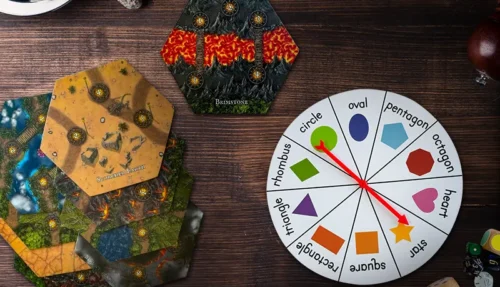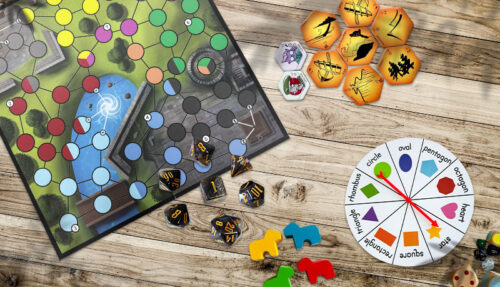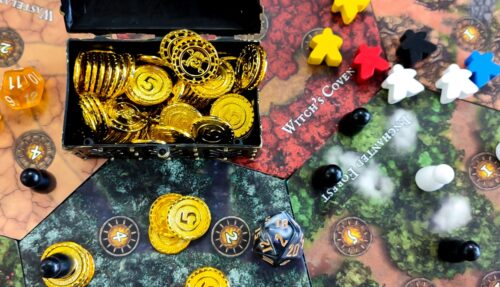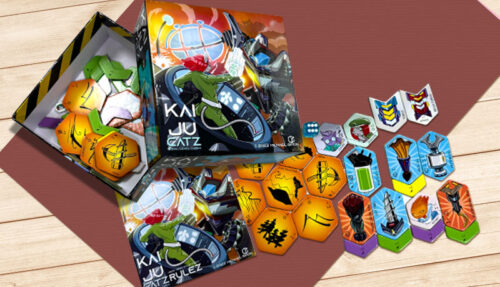Board games needn't be competitive. In fact, there's a growing trend for games which require players to cooperate in order to fulfil the win condition. Here, we explore the challenges of designing a cooperative game.

Cooperative board games have gained significant popularity in recent years, offering players the opportunity to work together towards a common goal rather than competing against each other. These games foster collaboration, strategic thinking, and teamwork, making them a favorite choice for many game enthusiasts. In this post, we’ll explore the key elements involved in designing a successful cooperative board game, drawing inspiration from 10 of the most popular co-op games on the market today.
The core of cooperative board games
Unlike traditional competitive games, where players aim to outsmart and outscore each other, cooperative games encourage collaboration and collective problem-solving. The success or failure of the players is determined as a group, creating a sense of camaraderie and shared experience. That’s the essential core that you must remember when designing your game. Everything — theme, mechanics, win condition, rules — must all support, encourage, and reward cooperation above all else.
So, the hallmarks of a good cooperative game are that it provides a sense of unity, is inclusive, fosters teamwork, requires listening and communication, and rewards players with shared triumphs.
- Sense of unity: Cooperative games foster a sense of unity among players as they work towards a common goal. This shared experience can strengthen bonds and create lasting memories among the players both in the game and in their real-world relationships, too.
- Inclusive gameplay: Cooperative games are often designed to accommodate players of different skill levels and abilities, making them accessible to both experienced gamers and newcomers. This inclusivity promotes a welcoming and enjoyable gaming environment in which no-one feels left out and in which everyone makes a valuable contribution to the success of the team.
- Teamwork and communication: Collaborative gameplay requires effective communication and teamwork to solve puzzles, overcome problems, reach decisions, and fulfil the ultimate win condition. Players must strategize, share information, and make collective decisions, enhancing interpersonal skills and promoting effective communication.
- Shared challenges and triumphs: Overcoming challenges as a team creates a sense of accomplishment and shared triumph. It allows players to celebrate together and share in the excitement of victory, much as happens in team sports. A collective effort in which every player’s contribution is valued and acknowledged means everyone shares in the sense of victory and everyone’s a winner.
Let’s examine 10 examples of cooperative board games that are popular today so that we can learn from them and get an insight into the range of possibilities with this kind of game. From epic fantasy adventures to thrilling escape room challenges, there’s something for everyone in this diverse selection. We think it shows that the category can support a huge breadth of styles and approaches while still sustaining the core ethic or cooperation and that there’s plenty of room for innovative new games in this growing market.
1. Gloomhaven
Gloomhaven is not just a game; it’s an immersive fantasy world that grabs players and pulls them in from the first play through. In this cooperative adventure, the team players take on the roles of mercenaries in the ever-changing world of Gloomhaven. With its legacy system, the game allows for a deep and growing narrative that spans generations. It’s especially interesting because it combines personal player objectives with cooperative mechanics necessary to achieve them.
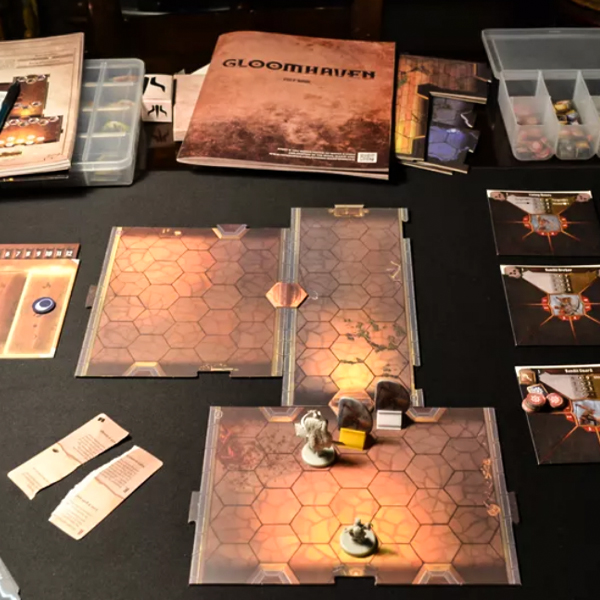
2. Exit
Exit is a series of “one-and-done” games which simulate the experience of an escape room right on the table top. Working together, players must solve puzzles, find clues, and unravel the mysteries within a set time limit. With a variety of scenarios available, each with its own unique theme and challenge, the Exit series offers endless hours of cooperative puzzle-solving fun.

3. Paleo
Paleo takes players back in time to the Stone Age, where survival is the goal. As a tribe of early humans, they must navigate a harsh and unforgiving world, overcoming challenges and working together to thrive. Each player has a deck of cards representing the skills and tools available to their tribe. The game shines when tribes come together, pooling their resources to overcome tough encounters. With its immersive survival narrative and a variety of scenarios, Paleo offers players a potent cooperative experience.

4. Pandemic Legacy
Pandemic Legacy is the game that puts cooperative gaming on the map. In this legacy-style game, players must work together to contain and cure diseases that threaten to wipe out humanity. With its action point allocation and unique player roles, Pandemic Legacy offers a strategic and immersive experience, but what sets it apart is its campaign structure, where each session builds on the previous one, creating a sense of progression and consequence. As play progresses, the game introduces permanent changes, such as ripping up cards and altering components, adding a thrilling element of “no going back” to the gameplay.
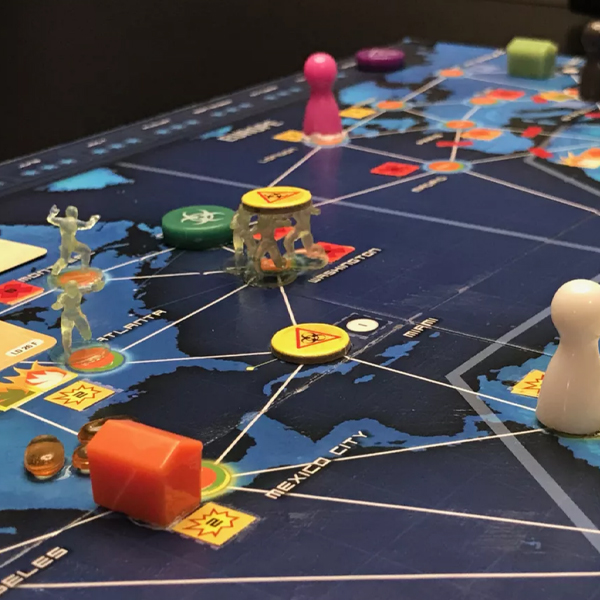
5. Robinson Crusoe: Adventures on the Cursed Island
Based on the classic novel, Robinson Crusoe: Adventures on the Cursed Island is a game in which layers take on the roles of shipwreck survivors, working together to gather food, build shelters, and explore the island. The game requires careful planning and teamwork, as players must manage resources and fend off various threats. It’s a perfect example of a game that captures the essence of survival and cooperation.
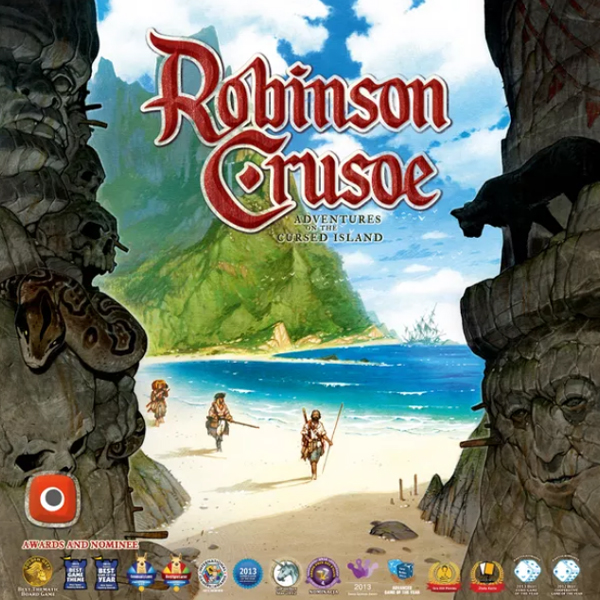
6. Just One
Just One is a cooperative party game that brings people together through wordplay. Players work as a team to guess the correct word, with each player providing a clue. Not strictly a board game, we’ve included here because it exemplifies the kind of game mechanic which make cooperation essential to winning. Just One encourages creativity, collaboration, and lots of laughter.
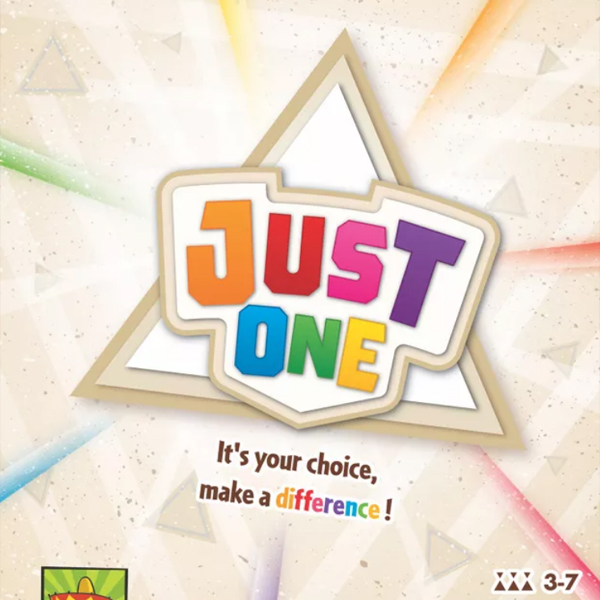
7. Marvel Champions: The Card Game
For superhero fans, Marvel Champions: The Card Game is a must-have cooperative experience. In this living card game, players take on the roles of iconic Marvel heroes, working together to defeat villains and save the day. The game features modular deck-building, allowing players to customize their hero’s abilities and play style.
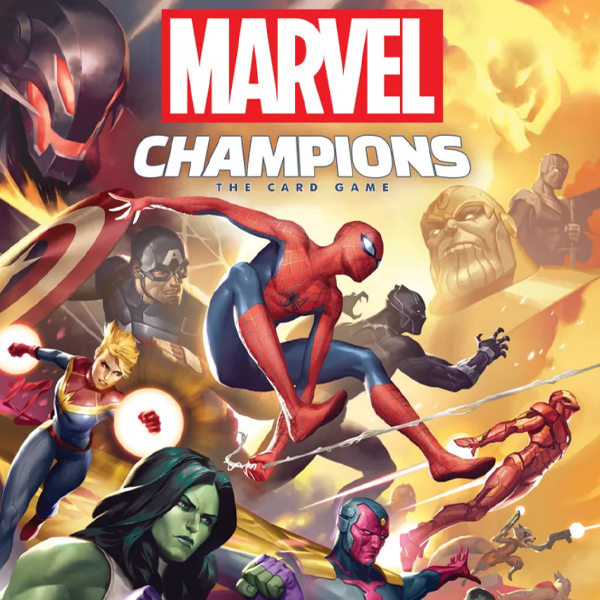
8. The Crew: Mission Deep Sea
The Crew: Mission Deep Sea puts a cooperative twist on the classic trick-taking genre. Players work together to complete missions by winning tricks of specific types. The catch is that communication is limited, with each player able to reveal only one card per hand. This creates a strategic and challenging experience, as players must decide when to help their teammates and when to focus on their own objectives. It’s one of an ongoing series and exemplary of the co-op gaming genre.

9. Sherlock Holmes: Consulting Detective
This immersive cooperative game allows players to take on the role of Holmes and his trusted companions as they solve mysteries. With each scenario providing a short setup and then setting players loose on London, the game encourages exploration, deduction, and careful investigation. Unlike the famed detective himself — who was more likely to work independently and share little information with his confederate, Dr. Watson, until he’d solved the crime, this version relies on teamwork and cooperation to find the answer to the mystery.

10. Spirit Island
In Spirit Island, players become spirits of the land, defending their island home from invading colonizers. Each spirit has unique powers and abilities, and players must work together to deploy their powers strategically and repel the invaders. With its deep gameplay and rich theme, Spirit Island offers a complex and rewarding cooperative experience. The game requires careful planning, coordination, and teamwork to achieve victory.
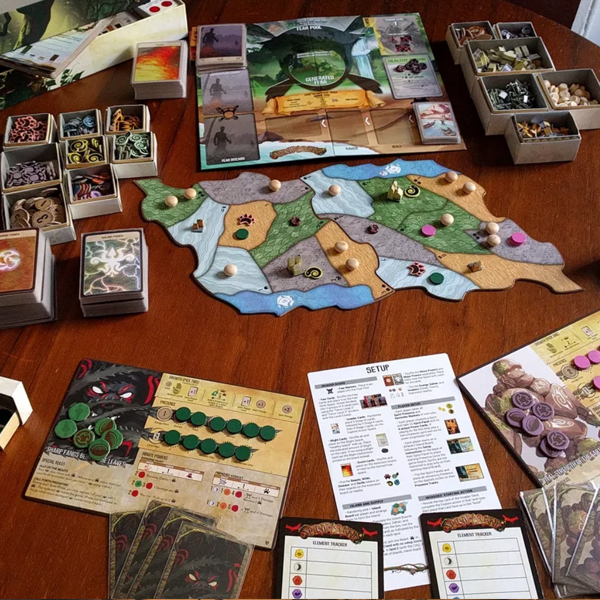
The mechanics of cooperation
One common challenge in cooperative games is one player dominating the decision-making process, leading to a phenomenon known as “quarterbacking.” When you’re designing a co-op board game, the mechanics of play are the key area on which to concentrate. We’ve seen in the examples above how broad the themes and styles can be. But to make sure the game works cooperatively, and to avoid single player dominance, getting the mechanics right is vital. So, here are several examples of co-op game mechanics to get you started on the right track with your design.
Specialization and roles
One effective way to encourage team play in cooperative games is by assigning players different roles and specializations. By giving each player a unique set of abilities and responsibilities, this mechanic promotes collaboration and diversifies the decision-making process. For example, in the game Pandemic, players take on specific roles such as Medic, Dispatcher, or Researcher, each with their own unique abilities that contribute to the team’s success. This mechanic ensures players work together and use each other’s strengths to overcome challenges.
Shared resources vs. sharing resources
In cooperative games, the concept of resources often plays a crucial role. However, there is a distinction between shared resources and sharing resources. Shared resources are those that all players have access to and must collectively manage for the team’s benefit. Sharing resources involves players voluntarily giving up their own resources to assist others. This mechanic promotes teamwork and encourages players to make strategic decisions that benefit the entire team. For instance, in the game Paleo, players must coordinate their actions and share resources to overcome threats to the tribe.
Party skill
Party skill is a mechanic that motivates players to work together by granting bonuses or advantages based on the collective skill level of the team. This encourages players to collaborate and develop complementary skills to maximize their chances of success. For example, in Marvel Champions, players form a party of superheroes with unique skills and abilities. The game rewards the team when they collectively possess a certain level of skill, promoting coordination and cooperation.
Bonuses for teamwork
To foster team play, cooperative games often incorporate mechanics that provide bonuses or rewards when players collaborate effectively. These bonuses can be as extra actions, increased resources, or enhanced abilities. By motivating teamwork, players are encouraged to work together and strategize collectively.
Ally-only abilities
Another way to encourage team play is by incorporating abilities or actions that can only be activated when players cooperate with their allies. This mechanic requires players to coordinate their actions and consider the needs of their teammates. Cooperative deck-building games typically feature ally-only abilities that can be triggered when players assist each other. This encourages players to communicate and collaborate, leading to a more cohesive team strategy.
Assist cards
Assist cards are a mechanic that allows players to provide support or help to their teammates. These cards can mitigate damage, provide resources, or enhance the abilities of other players. By giving players the ability to help one another, cooperative games encourage players to think beyond their individual goals.
Ready to design your own co-op board game?
Cooperative board games provide a refreshing change of pace from traditional competitive games. They offer an opportunity to build camaraderie, foster teamwork, and engage in immersive storytelling. Whether you’re exploring fantasy realms, solving mysteries, or battling against the odds, cooperative board games bring people together and create lasting memories.
From the epic campaign of Gloomhaven to the fast-paced wordplay of Just One, there’s a cooperative game for every taste and skill level. But there’s still plenty of room for new iterations and innovative contributions to this exciting and growing board game genre. We hope that the ideas and mechanics we’ve explored in this post will inspire you and encourage you with your own cooperative board game design.
Talk to us!
Designing a cooperative board game presents its special challenges and rewards. We’re here to make designing, printing, and making your board game as easy and stress free as possible. If you have questions, get in touch. We’d be happy to answer all your co-op board game printing and manufacturing questions and we can give you a no-obligation quote for your project on request. Talk to us — we’re here to help!






